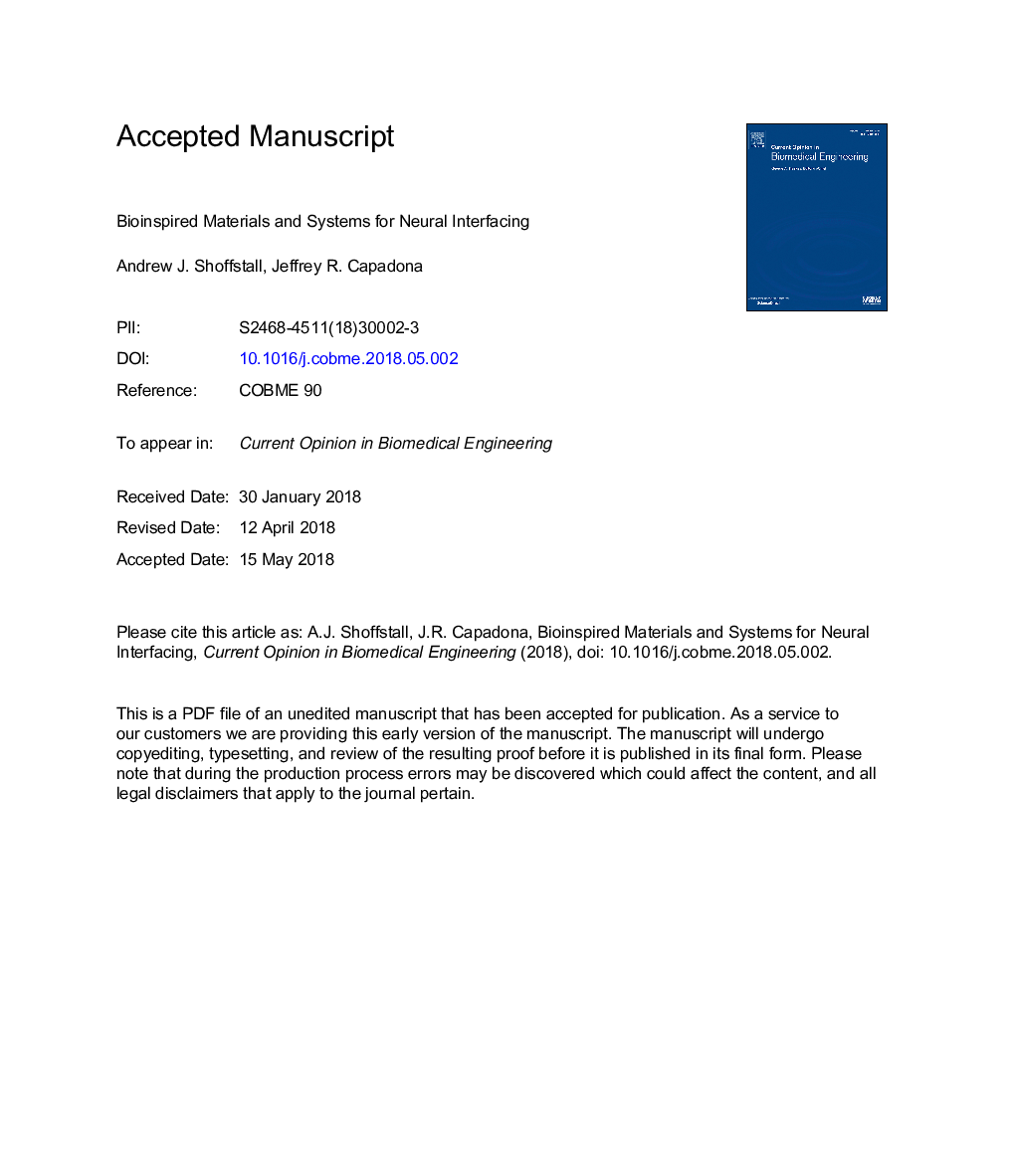| Article ID | Journal | Published Year | Pages | File Type |
|---|---|---|---|---|
| 8918952 | Current Opinion in Biomedical Engineering | 2018 | 19 Pages |
Abstract
Brain-implanted devices have a number of applications with significant potential. Widespread adoption hinges on the ability to produce an interface that can engage with neural tissue over long periods of time. Biomimetic approaches can help camouflage implants by altering their characteristics to better reflect the neural environment, which may promote an attenuated inflammatory response, improving integration into native tissue, and ultimately improve device performance. Additionally, as new neural interfacing technologies are developed, unexpected challenges can arise, requiring novel tools to enable their implementation. Unlikely inspiration from the mechanically-dynamic sea-cucumber-dermis, mechanism of a mosquito bite, squid beak mechanics, and the woodpecker's dynamic control of intracranial pressure represent some of the exciting bioinspired systems that may lead to unique solutions to recent challenges in neural interfacing.
Keywords
Related Topics
Physical Sciences and Engineering
Engineering
Biomedical Engineering
Authors
Andrew J. Shoffstall, Jeffrey R. Capadona,
